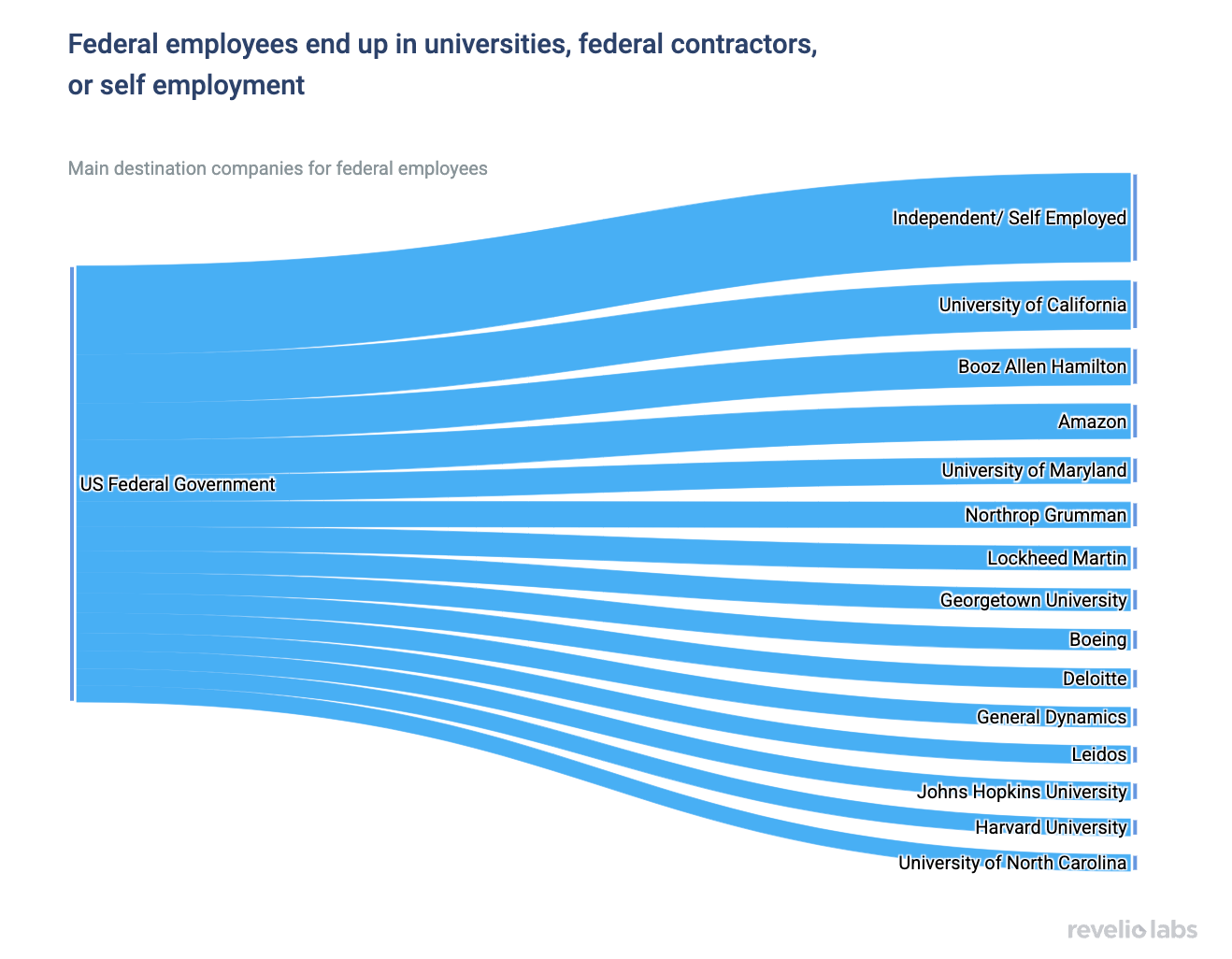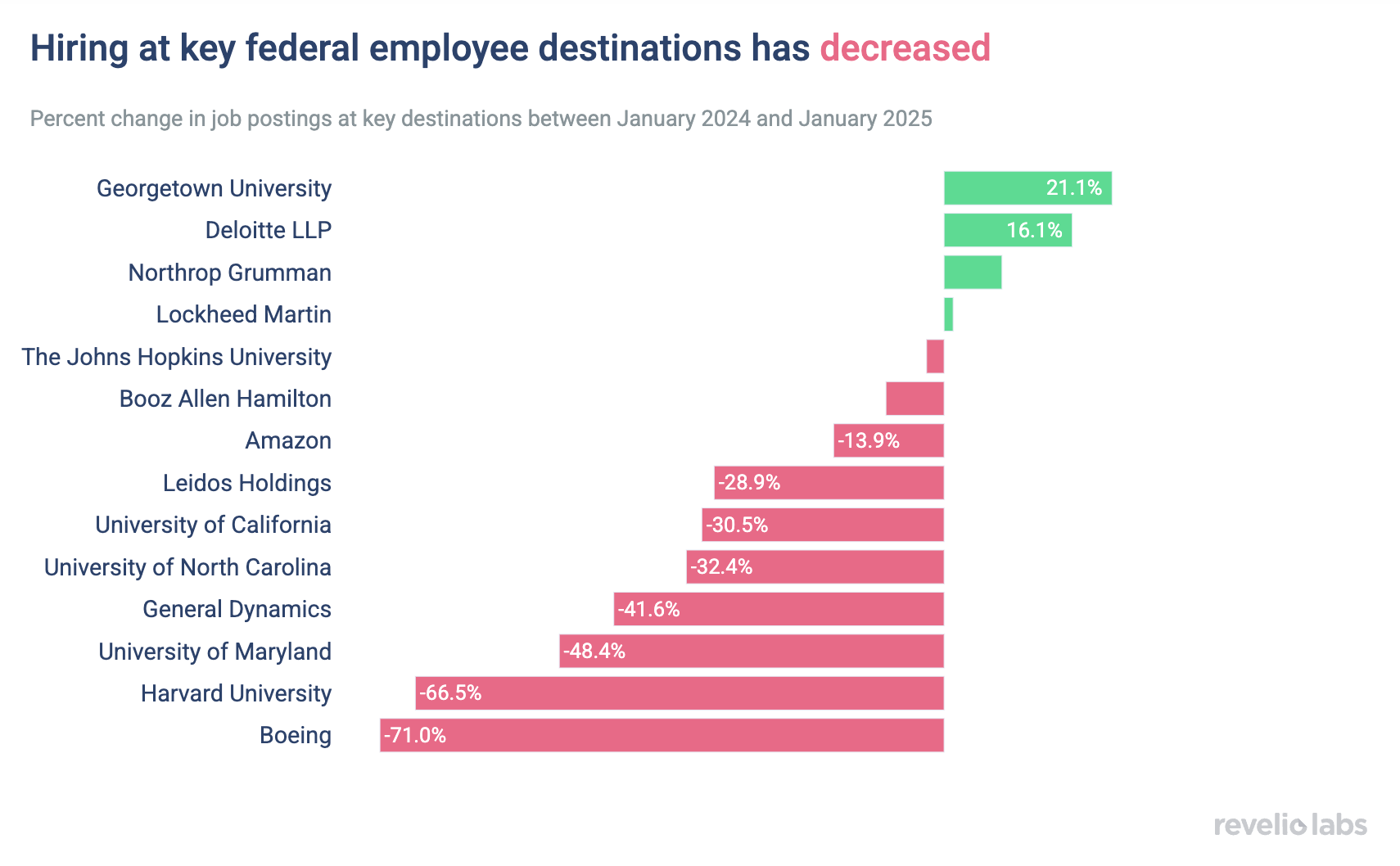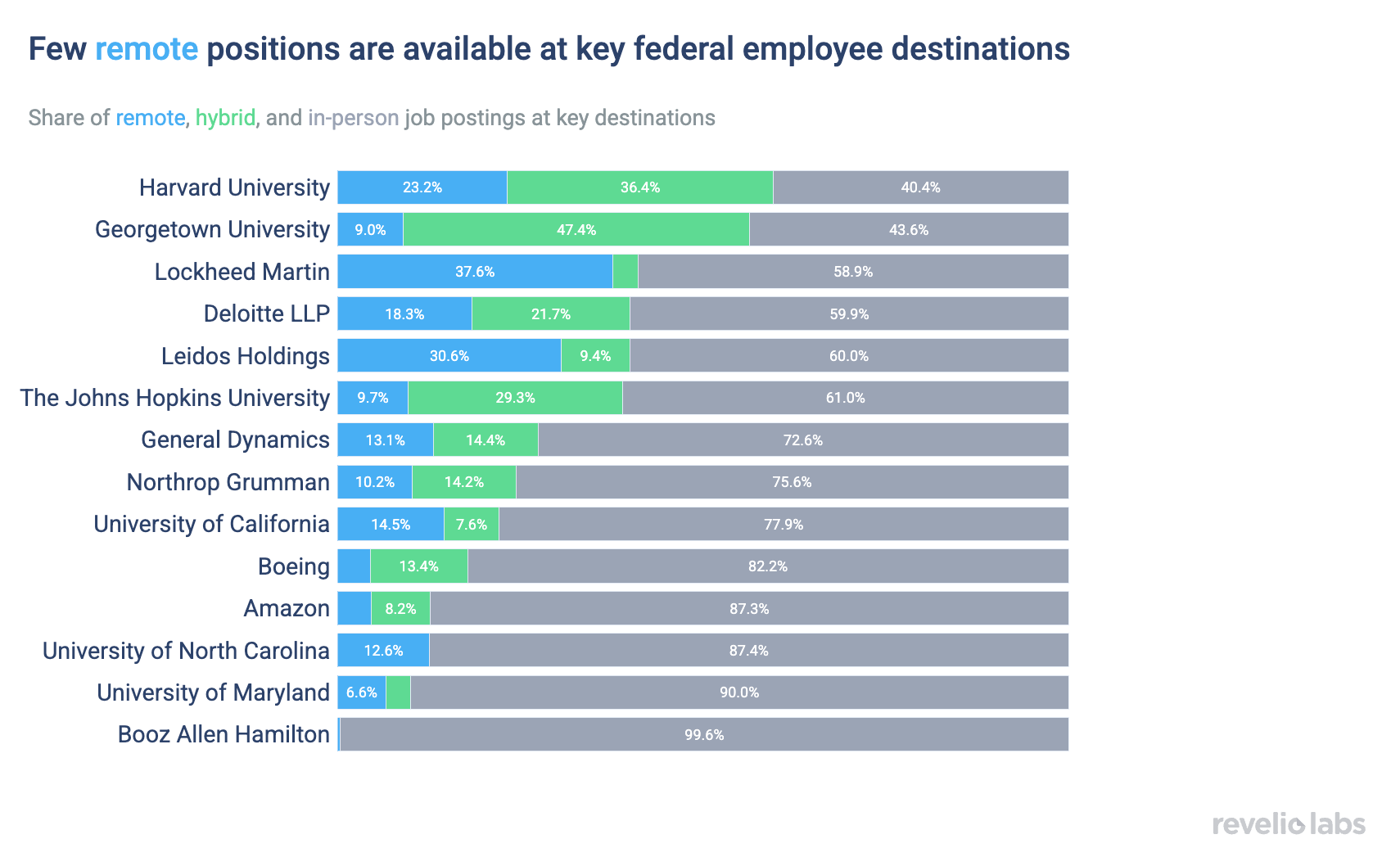Return To Office or Resign? What Options Do Federal Employees Have?
Potential exit ramps for government employees

Over the past two years, many federal employees who left government roles have transitioned into self-employment or into roles in the private sector, federal contractors, or universities—reflecting large skill transferability from the government to other sectors.
Tightening labor demand will certainly be a factor limiting traditional exit pathways for federal employees who have been faced with Trump’s buyout ultimatum. Many top destinations for former federal workers have scaled back hiring in the past year amid a cooling labor market, while remote opportunities in these institutions have become scarce. This leaves fewer options for those who prioritize flexible work arrangements.
With limited remote opportunities in traditional destinations, self-employment and independent consulting can be viable, attractive paths for federal employees. Many former federal employees have successfully transitioned to these flexible, entrepreneurial work arrangements as a way of adapting to the evolving labor market.
On his first day back in office, President Donald Trump signed an executive order requiring all federal employees to return to in-person work, ending the era of flexible work arrangements. This mandate has sent shockwaves through the federal workforce, disrupting the routines of employees who have worked remotely for years. It also aligns with Trump’s broader effort to shrink the size of the US government—a key promise of his reelection campaign. Just a week later, the White House’s Office of Personnel Management (OPM) followed up with an email offering federal employees the option to resign with pay through Sept. 30, providing a financial incentive for voluntary departures. Federal employees now face a difficult choice—return to the office as mandated or take the resignation offer and seek new opportunities outside the government. Even those who comply with the return-to-office mandate may find themselves needing to transition out in the near future.
Revelio Labs workforce data shows that at least 11% of federal employees have a flexible work arrangement, as measured by them living and working in two different metro areas. These employees have built their routines around remote work. For them, a full return to the office is not just a policy change—it’s a major disruption.
But what options do federal government employees have if they decide to leave? To answer this, we use Revelio Labs' granular workforce data to track federal employees who have left government roles since President Biden's 2022 call for a return to in-person work. Excluding those who retired or became full-time caregivers, our analysis reveals clear patterns in their career transitions. A significant share moved into self-employment, often as independent consultants or by starting their own businesses. Others found opportunities in the private sector, with tech companies like Amazon and consultancies like Booz Allen being top destinations. Universities, as well as federal contractors, such as The Boeing Company, Northrop Grumman, and Lockheed Martin, also absorbed a notable share of former federal employees.


With many federal employees projected to move into new roles in the coming year, a key question arises: Are these popular destinations for federal workers still hiring? The labor market cooled in 2024, as many employers scaled back hiring due to economic uncertainty and budget constraints. Currently, only four of the fourteen top employers who routinely hire federal workers are expanding hiring compared to last year, including government contractors Northrop Grumman and Lockheed Martin. It remains to be seen whether these contractors keep up their hiring efforts given uncertainties surrounding federal spending budgets.


Looking ahead, federal employees searching for new opportunities may still face significant challenges. Labor demand remains tight, and many of the industries that federal employees typically transition to are not hiring at the same pace as before. While economic uncertainty continues to weigh on employers, the situation has been further complicated by a federal spending freeze announced shortly after the resignation offer. This freeze threatens funding for key programs, including food safety, crime prevention, and housing assistance, which could, in turn, force federal contractors and even universities to tighten their budgets—further limiting hiring opportunities.
For federal employees hoping to find remote work elsewhere, the odds are slim. The popular destinations where many former federal workers have landed currently offer very few remote jobs. This aligns with a broader trend across the U.S. labor market, where the share of remote job postings has declined significantly amid widespread RTO mandates in many industries. As a result, federal employees seeking flexibility may find limited opportunities to continue working remotely.


Federal employees weighing their options should act quickly, as demand for remote work remains, even though opportunities are scarce. Many may need to consider reskilling or relocating to secure new roles. Given past trends, self-employment and independent consulting have been viable paths for those leaving the government, offering flexibility and new career opportunities. As the job market continues to evolve, staying adaptable and proactive will be crucial for a successful transition.

